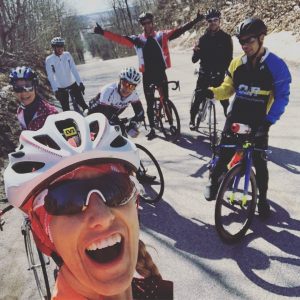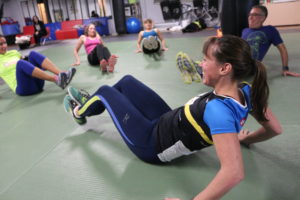By Coach Nick Leclair
The outdoor season is upon us, which means travelling to training locations is on the horizon. Sometimes, travelling with cycling and running gear means unnecessary stress with transporting gear to and from the training location. Hopefully, I can give some insight on how to make this easier! Having a great training session while travelling is easier said than done. But, with a few simple prep tips, getting out on the road in a new location can be simpler than you think.
- Plan your route. This may seem obvious, but planning a route ahead of time that syncs to your devices can make your training sessions effortless. Depending on your travels, you may have to purchase additional map packs (Garmin has a European, North America, etc. Map packs). Both Strava and Garmin have ‘heat maps’ when planning routes. These ‘heat maps’ show popular roads which are safe r for cyclist and runners! If you are planning a new route, try and factor in a bit of course recon beforehand.
- Prepare your gear and don’t over think! Check the weather status and pack the appropriate gear. Depending on the distance you are travelling, it may be easier to get ready at home and drive to the meet-up site dressed in your gear. This will eliminate the need to do a “parking lot change”. l. Remember your essentials – Jersey + Bib shorts + gilet (vest) + socks + shoes + helmet – then the rest is luxury/ stylish add-ons!
- Pack a bag. You may feel inclined to throw everything in your car because it is only a short drive to the meet-up site BUT this will make your life hectic on the other end. Pick a generous size duffle bag and pack your gear and nutrition in this bag. This will allow your car to stay clean – clean car is a clean mind! As for your bike, consider investing in a bike rack that allows you to transport your bike without having to dismantle any part of it (wheels, cockpit, etc.).
- Charge your devices. There’s nothing worse than your computer or power meter dying half way through your ride. If it’s not on Strava it never happened, right? Plugging in your gear the night before takes less than 30s, and it will save you a storm of emotions at the 20km mark of your ride.
- Share your route. This should apply to any ride – local or new location. Always share your ride details with an ‘emergency contact’, so if something happens, it is easier for help to find you. Plan to carry your phone.
Remember to have fun! Training in new locations is meant to be fun. Enjoy the experience! Safety should always be always your number one priority. When planning longer trips, such as training camps that involve airlines, it is important to pack your bike correctly to protect it from any bangs and drops. Airlines make it very easy to bring your bike, so plan to check it in as ‘special equipment’. This usually costs between $50-100 depending on the airline. The perk to this is the airline weight capacity is typically around 30-50kg. You can pack all your training essentials in the bike box without taking up weight capacity of your other luggage.



